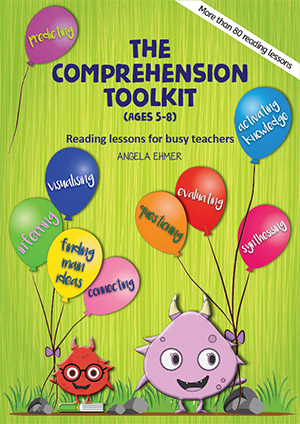Six Traits of Writing
The Six Traits of Writing is an approach for planning, teaching, and assessing students’ writing. The approach has gathered momentum over past decades due to the explicit teaching of writing skills and behaviours for students of all ages, teaching at all stages of the writing process, active involvement of students in assessment and monitoring and clear and consistent metalanguage. The Traits is not a program and as such aligns with any existing program or curriculum content.

Based on decades of research, the Six Traits are those qualities deemed characteristic of ‘good writing’. Building on research into both the writing process and assessment scales, it was the research by Beaverton School District (1984) which ultimately led to the development of the Traits. Though other small studies followed, it was the study by Arter, Spandel, Culham and Pollard (1994) which remains the most rigorous and noteworthy to date. Not only did the study measure the effectiveness of the Traits, but it included:
- randomly assigned treatment and control groups
- classes in rural and urban settings
- students from varying socio-economic backgrounds
- small and large class sizes.
What are the Traits?
The Six Traits of Writing are:
- IDEAS
- ORGANISATION
- VOICE
- WORD CHOICE
- SENTENCE FLUENCY
- CONVENTIONS
Within each Trait, teaching is narrowed to specific skills as these relate to writing tasks. Central to all instruction is attention to purpose and audience.
Key features of Traits-based learning are the use of quality texts, construction of meaningful assessment tools and data-driven instruction. Foundations for teaching the Traits include:
- learning to recognise the Traits in the writing of others
- aligning teaching content to diagnostic tools (rubrics)
- matching teaching content to specific learners
- guiding students to apply specific skills
- writing frequently
- using descriptive feedback
- engaging students in goal setting and accountability
Whether adopted by individual teachers, schools and school districts, Traits-based instruction supports teachers to plan meaningful lessons, isolate and identify specific text features, develop a metalanguage to talk about writing and support students to develop self-reliance and writing-improvement strategies.
Rubrics are the most common way to assess the quality of student writing samples when using Traits-based instruction.
You can learn much more about the Traits through our online video presentation ‘The Six Traits of Writing‘.
To read more:
Arter, Judith, Spandel, Vicki, Culham, Ruth, and Pollard, Jim. (1994). The Impact of Training Students to be Self-Assessors of Writing. New Orleans. Paper presented at AERA.
Bangert-Drowns, R.L., Hurley, M.M., and Wilkinson, B. (2004). The effects of school-based writing-to-learn interventions on academic achievement: a meta-analysis. Review of Educational Research, Vol 74(1), 29–58.
Collopy, R.M.B. & Marshall-Arnold, J. (2017). Adoption of the Six Traits Analytic Writing Model with a Low-Income Student Population: A Comparative Study of Improvement in Student Writing. International Journal of Educational Reform. Vol 26, (4).
Coe, M.T. (2000). Direct writing assessment in action: correspondence of six-trait writing assessment scores and performance on an analog to the Washington Assessment of Student Learning writing test. Portland, OR: Northwest Regional Educational Laboratory.
Culham, R. (2003). 6+1 traits of writing: The complete guide, grades 3 and up. New York: Scholastic Professional Books.
Grundy, T., The Writing Program in the Beaverton School District. (1986). Oregon School Study Council Bulletin, Vol 30 (2).
Graves, D.H. (1975). An examination of the writing processes of seven-year-old children. Research in the Teaching of English, Vol 9, 227-241.
Jarmer, D., Kozol, M., Nelson, S., & Salsberry, T. (2000). Six-Trait Writing Improves Scores at Jennie Wilson Elementary. Journal of School Improvement, Vol 1, (2).
Spandel, V. (2008). Creating Young Writers: Using the Six Traits to Enrich Writing Process in Primary Classrooms. Boston: Pearson.
Tompkins, G.E. (1993). Teaching Writing: Balancing process and product. Englewood Cliffs, NJ. Macmillan.
Coe, M.C., Hanita, M., Nishioka, V., Smiley, R. (2011). An Investigation of the Impact of the 6+1 Trait Writing Model on Grade 5 Student Writing Achievement. U.S. Department of Education.
Tags: Six Traits of Writing




